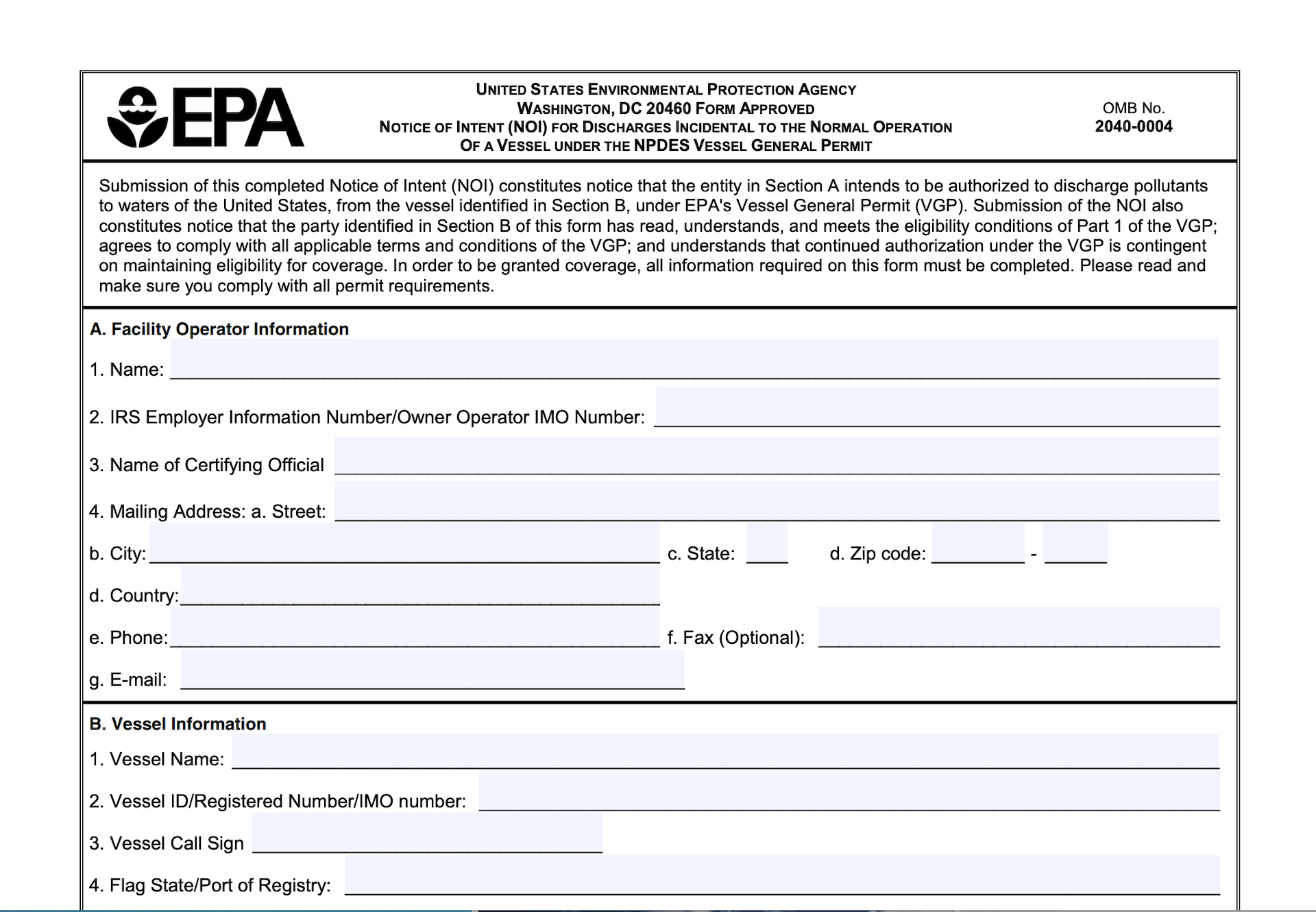The National Pollutant Discharge Elimination System (NPDES) plays a pivotal role in safeguarding water quality across the United States.
Every state issues its own NPDES permits pursuant to the Clean Water Act, which regulates a wide range of activities, including point source stormwater discharge into public waters or the US or municipal separate storm sewer systems (MS4s).
Most construction-related activities that discharge stormwater require NPDES permits, though there are certain exceptions.
The EPA requires a notice of intent (NOI) to acquire an NPDES permit. We’ll discuss the basics of an NOI and how to submit one, modify one, and even terminate one.
What Is a Notice of Intent (NOI)?
A Notice of Intent (NOI) serves as a formal notification to the EPA of an organization’s intent to discharge pollutants into navigable waters. A NOI is required to obtain an NPDES permit and typically contains important information, such as:
- Name of operator
- Site information
- The size of the area being disturbed
- Receiving waters
- Any chemicals being used on-site
- Information pertaining to any endangered wildlife
The EPA also requires site operators to complete a SWPPP to submit an NOI. Stormwater management plans are not required in the physical application but will be required during the inspection follow-up.
What Do NPDES Permits Cover?
NPDES permits govern the discharge of pollutants into surface waters, including rivers, lakes, streams, and coastal areas.
They are designed to reduce pollutant levels, improve on-site monitoring, and streamline reporting requirements.
Some key components covered by NPDES permits include:
- Effluent Limits: Specifies the maximum allowable concentrations of pollutants that can be discharged into water bodies.
- Monitoring Requirements: Regular monitoring of effluent quality is mandatory to ensure compliance with permit conditions.
- Reporting Obligations: Requires the submission of monitoring data and compliance reports to the EPA or state regulatory agencies.
- Best Management Practices (BMPs): Prescribes measures to minimize pollutant discharges through the implementation of effective management practices.
- Compliance Deadlines: Set deadlines for achieving compliance with permit requirements and implementing necessary corrective actions.
Through proper compliance, the NPDES can protect water resources and reduce environmental pollution.
When Is an NPDES Permit Required?
NPDES permits are required for a range of general business activities. For construction sites, NPDES permits are required whenever an acre or more of land is being disturbed.
However, permits are only required when discharging pollutants from a point source into US public waters. If you’re discharging into a public sewer, you will not require an NPDES permit (but you may require local ones). A point source is any clearly defined conveyance, such as a pipe or tunnel, that is directly routed to a public water system.
How to Submit a Notice of Intent
It’s important to note that NPDES are delegated on a state-by-state basis. This map illustrates which states have full EPA authority to issue permits and which do not.
Depending on your state, you will need to apply for a permit through their state-delegated environmental department or through the EPA itself.
Note: NPDES permits are only issued for five years.
How to Modify Your NOI
In some instances, modifications to an existing NOI may be necessary to reflect changes in operations, discharge characteristics, or permit conditions. Some reasons for modifying an NOI may include:
- Expansion of facility operations
- Changes in pollutant sources or discharge points
- Updates to monitoring and reporting requirements
- Implementation of new pollution control measures
To modify an NOI, applicants must submit a request to the EPA or their state authority with revised information.
How to Submit a Notice of Termination (NOT)
Upon ceasing operations or terminating a permitted activity, entities must submit a Notice of Termination (NOT) to formally close out their NPDES permit. The NOT confirms to the EPA or state regulatory agency that discharges have ceased, construction activity has also ceased, and permit obligations have been fulfilled. Once approved, the NOT relieves the permittee of ongoing permit obligations and responsibilities.
The Importance of a SWPPP Consultant
Most site managers may find it unnecessary to navigate the regulatory hurdles of the EPA or their state. Instead, outsourcing this task to an environmental consultant specializing in SWPPP creation, stormwater inspections, and NPDES compliance often makes sense.
FAQs
Can I operate without an NPDES permit?
Unless specifically exempted, facilities discharging pollutants into navigable waters must obtain an NPDES permit to comply with the Clean Water Act.
What happens if I fail to submit an NOI?
Failure to submit an NOI or obtain an NPDES permit can result in regulatory violations, enforcement actions, and penalties, including fines and injunctions.
How long does it take to obtain an NPDES permit?
Permit processing times vary depending on factors such as the complexity of the application, regulatory review, and public comment periods. To allow for adequate processing time, it’s advisable to initiate the permitting process well in advance of planned activities.

